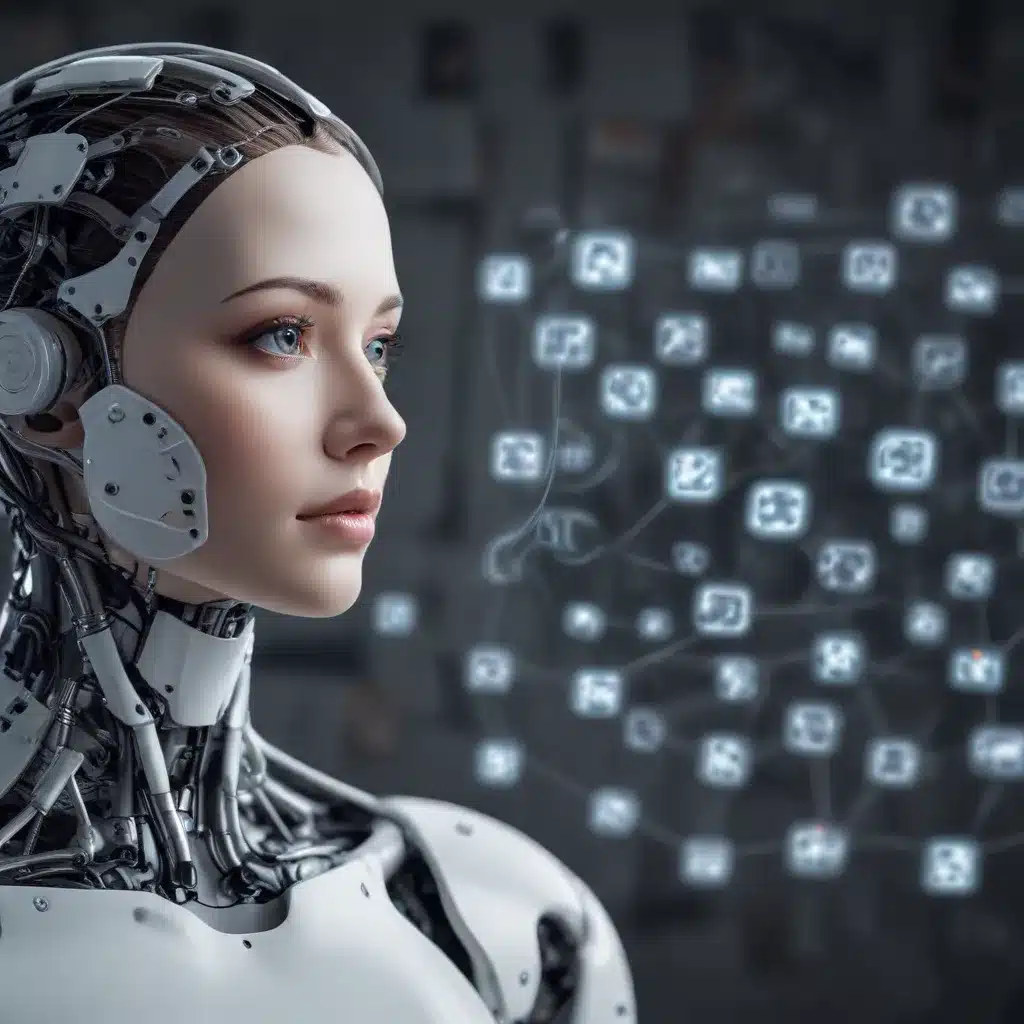
AI and the Future of Personalized Intellectual Property Protection: Automated Content Moderation and Copyright Management
The Evolving Landscape of AI-Driven Content Creation: Challenges and Opportunities for Intellectual Property Protection
In the rapidly evolving digital landscape, the advent of artificial intelligence (AI) has transformed the content creation landscape, giving rise to both exciting possibilities and complex challenges. As AI-powered tools become increasingly sophisticated in generating text, images, and multimedia, the issue of intellectual property (IP) protection has become a pressing concern for writers, artists, and content creators.
Navigating the Complexities of AI-Generated Content
The proliferation of AI-driven content creation has sparked a contentious debate surrounding the rights of creators and the transformative potential of AI. Some argue that writers and artists cannot effectively sue AI companies for the unauthorized use of their work, citing the lack of tangible monetary damages and the transformative nature of AI-generated content. However, this perspective fails to address the deeper implications of unchecked AI-driven content creation.
Recognizing the Intrinsic Value of Creative Expression
The argument that writers cannot sue due to the lack of monetizable damages dismisses the inherent worth of creative expression. Content creators pour their time, effort, and personal experiences into their work, aiming to share unique perspectives with the world. When AI-generated content infringes upon these creations without proper attribution or compensation, it erodes the value of creative endeavors, potentially discouraging future innovation and diversity of ideas.
Addressing Non-Monetary Harm
While monetizable damages are more readily quantifiable, the non-monetary harm caused by unauthorized use of creative work should not be overlooked. Writers often have an emotional attachment to their creations, and the misuse or misrepresentation of their work by AI companies can lead to distress and a sense of violation. Moreover, when AI-generated content misinterprets or misrepresents the original work, it can tarnish the creator’s reputation and artistic integrity, resulting in lasting harm that extends beyond financial losses.
Upholding Intellectual Property Rights
The argument in favor of transformative AI-generated content overlooks the fundamental issue of intellectual property rights. Even if AI-powered tools transform existing content, the original creation remains the property of the writer or artist. Protecting these rights is essential to maintaining a fair and equitable creative landscape, where creators are acknowledged and rewarded for their contributions.
Safeguarding Diversity of Ideas
Encouraging AI companies to freely use writers’ work under the premise of transformation can inadvertently stifle the diversity of ideas. When AI-generated content draws extensively from existing works, it perpetuates a cycle of homogeneity, limiting the variety of perspectives and artistic expression available to audiences. This, in turn, may discourage writers and artists from taking creative risks, as they fear their work will be indiscriminately absorbed and transformed by AI without appropriate recognition.
Mitigating Potential Market Disruption
An unchecked proliferation of AI-generated content without legal repercussions can disrupt content markets. As AI-produced material becomes more prevalent and accessible, original human-created content may face diminished demand, leading to financial hardships for writers and content creators. This can have far-reaching consequences for creative industries, potentially undermining the livelihoods of countless individuals in the long run.
Towards a Balanced Approach: Protecting Creators in the Age of AI
While the transformative and innovative potential of AI-generated content is undeniable, it is crucial to strike a balance that upholds the rights and creativity of writers, artists, and content creators. The legal framework must evolve to address the challenges posed by AI in content creation, safeguarding the value of creative expression while embracing the benefits AI can offer.
Automated Content Moderation and Copyright Management
One potential solution lies in the development of advanced AI-powered content moderation and copyright management tools. These systems could be designed to automatically detect and flag instances of unauthorized use of copyrighted material, enabling creators to assert their rights and receive fair compensation. By leveraging AI’s capabilities, the process of identifying and addressing IP infringement could become more efficient and scalable, empowering creators to protect their work in the digital age.
Establishing Guidelines and Ethical Frameworks
Alongside technological advancements, the development of clear guidelines and ethical frameworks for the use of AI in content creation is essential. Policymakers, industry leaders, and creator communities must collaborate to establish principles that ensure the responsible and equitable use of AI, balancing innovation with the protection of intellectual property rights.
Promoting Transparency and Accountability
Increased transparency and accountability within the AI development and deployment process are crucial. AI companies should be required to disclose the extent to which their systems utilize copyrighted material and the measures taken to obtain necessary permissions or provide fair compensation to creators. This level of transparency can foster trust and facilitate the development of mutually beneficial solutions.
Fostering Collaboration and Education
Bridging the gap between AI developers, content creators, and legal experts is vital. Collaborative efforts to educate all stakeholders on the evolving landscape of AI-driven content creation, IP rights, and the available tools and strategies for protection can empower creators to navigate this complex terrain effectively.
Conclusion: Embracing the Future while Safeguarding Creativity
As the AI revolution continues to transform the content creation landscape, it is crucial to strike a delicate balance that upholds the rights and creativity of writers, artists, and content creators. By leveraging advanced AI-powered tools for content moderation and copyright management, establishing ethical guidelines, and fostering collaboration and education, we can navigate the intersection of AI and creative expression without compromising the integrity of artistic endeavors.
The future of personalized intellectual property protection lies in our ability to harness the power of AI while safeguarding the fundamental rights and creative potential of those who shape our cultural landscape. Only through a comprehensive and collaborative approach can we ensure that the benefits of AI-driven content creation are equitably distributed, paving the way for a thriving, diverse, and sustainable creative ecosystem.












